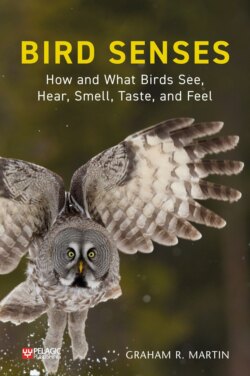Читать книгу Bird Senses - Graham R. Martin - Страница 39
На сайте Литреса книга снята с продажи.
The importance of vision in birds
ОглавлениеThe primary reliance of birds on vision is easily asserted. It can be based just upon casual observations of birds completing their everyday behaviours. However, this assertion is also well supported by evidence that in most species of birds relatively large portions of their brains are devoted to the analysis of information from vision. Also, the so-called ‘intelligent’ behaviours of birds seem to be based primarily upon visual information. Thus, extracting information from vision and using it to guide sophisticated behaviours is the essential function of the brains of most birds.
Only in a handful of extant bird species is vision not the primary sense. Even in such birds vision was at one time highly likely to have been the prime source of information. However, vision can become secondary through a process of regressive evolution. At the same time other senses, particularly olfaction, hearing, and touch sensitivity, can come to take on some of the primary functions usually carried out by vision. These include food detection, predator detection, and guidance of locomotion – all of which are underpinned by vision in most birds.
The prime examples of ‘non-visual’ birds are the five species of flightless kiwi, which probably lost their reliance on vision as they evolved in the absence of mammalian predators on the islands of New Zealand. The downgrading, but not complete loss, of vision in these birds is discussed in Chapter 9.
In other bird species, including some of the petrels (Procellariidae), shorebirds (Scolopacidae), and owls (Strigidae), olfaction, touch, and hearing respectively play a key role or one that is complementary to vision, especially when it comes to finding and ingesting food items. However, in these birds vision is still the primary guide for locomotion.
